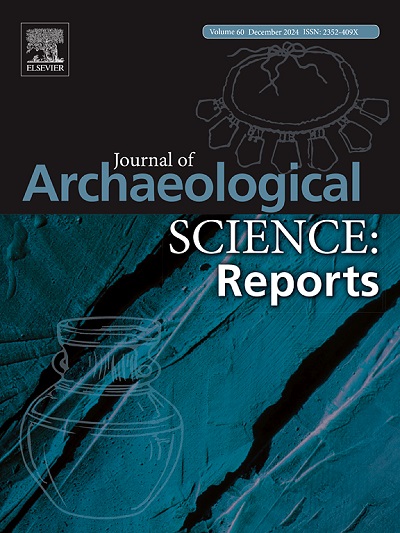古勒贝多斯(土耳其爱琴海地区)附近引水渠的前罗马时期 U-Th 年代测定结果
IF 1.5
2区 历史学
0 ARCHAEOLOGY
引用次数: 0
摘要
在位于安纳托利亚西部(土耳其)伊兹密尔以南、被称为爱奥尼亚十二城之一的莱贝多斯古城附近,东北-西南走向的活跃图兹拉断裂带上有许多温泉和相关的洞穴型碳酸盐沉积(烧结矿)。其中,活跃的多安贝(Doğanbey)浴场有一条长约 560 米的热水导水管,被称为 "罗马导水管"。这座建筑在材料和建造技术方面与该地区著名的罗马(拜占庭)遗址(卡拉科奇浴场)截然不同。尽管该地区缺乏详细的考古或地质年代研究,但多安贝浴场和导水管一直被认为是罗马时代的产物。多安贝导水管的水槽和侧壁覆盖着一层 5-25 厘米厚的层状烧结岩壳,是由热水流动形成的。每个烧结层都由方解石和/或霰石的径向结构组成,类似于羽毛状的灌木结构。这项研究利用铀-钍年代测定法确定了覆盖多昂拜浴场导水管的烧结层的年龄。从都安贝古渡槽的单一烧结矿样本中提取的两层烧结矿的 U-Th 年龄分别为 2717±106 年和 2528±106 年(BP)。这些年代表明,莱贝多斯地区曾出现过前罗马时期的聚落,这也是本研究首次记录下这一发现。本文章由计算机程序翻译,如有差异,请以英文原文为准。
Pre-Roman U-Th datings of an aqueduct near ancient Lebedos (Aegean Region, Türkiye)
In the vicinity of the ancient city of Lebedos, known as one of the twelve Ionian cities, located south of İzmir in W. Anatolia (Türkiye), the NE-SW-trending active Tuzla Fault zone is characterized by numerous hot springs and associated travertine-type carbonate deposits (sinter). Among these, the active Doğanbey bath features an approximately 560 m-long hot water aqueduct, called the “Roman Aqueduct”. This structure is distinct from the well-known Roman (Byzantine) ruins (Karakoç bath) in the area in terms of its materials and construction techniques. Despite the absence of detailed archaeological or geochronological studies in this region, the Doğanbey bath and aqueduct have conventionally been attributed to the Roman era.
The trough and sidewalls of the Doğanbey aqueduct are covered with a 5–25 cm-thick, laminated sinter crust, formed by the flow of hot water. Each sinter lamina comprises radial structures of calcite and/or aragonite, resembling feather-like shrub structures. This study employs the U-Th chronometry to determine the age of sinter layers covering the Doğanbey bath aqueduct. Two layers from a single sinter sample of the ancient Doğanbey aqueduct yielded U-Th ages of 2717 ± 106 and 2528 ± 106 years (BP). These dates indicate a pre-Roman phase of settlement in the Lebedos area, a finding documented for the first time through this study.
求助全文
通过发布文献求助,成功后即可免费获取论文全文。
去求助
来源期刊

Journal of Archaeological Science-Reports
ARCHAEOLOGY-
CiteScore
3.10
自引率
12.50%
发文量
405
期刊介绍:
Journal of Archaeological Science: Reports is aimed at archaeologists and scientists engaged with the application of scientific techniques and methodologies to all areas of archaeology. The journal focuses on the results of the application of scientific methods to archaeological problems and debates. It will provide a forum for reviews and scientific debate of issues in scientific archaeology and their impact in the wider subject. Journal of Archaeological Science: Reports will publish papers of excellent archaeological science, with regional or wider interest. This will include case studies, reviews and short papers where an established scientific technique sheds light on archaeological questions and debates.
 求助内容:
求助内容: 应助结果提醒方式:
应助结果提醒方式:


